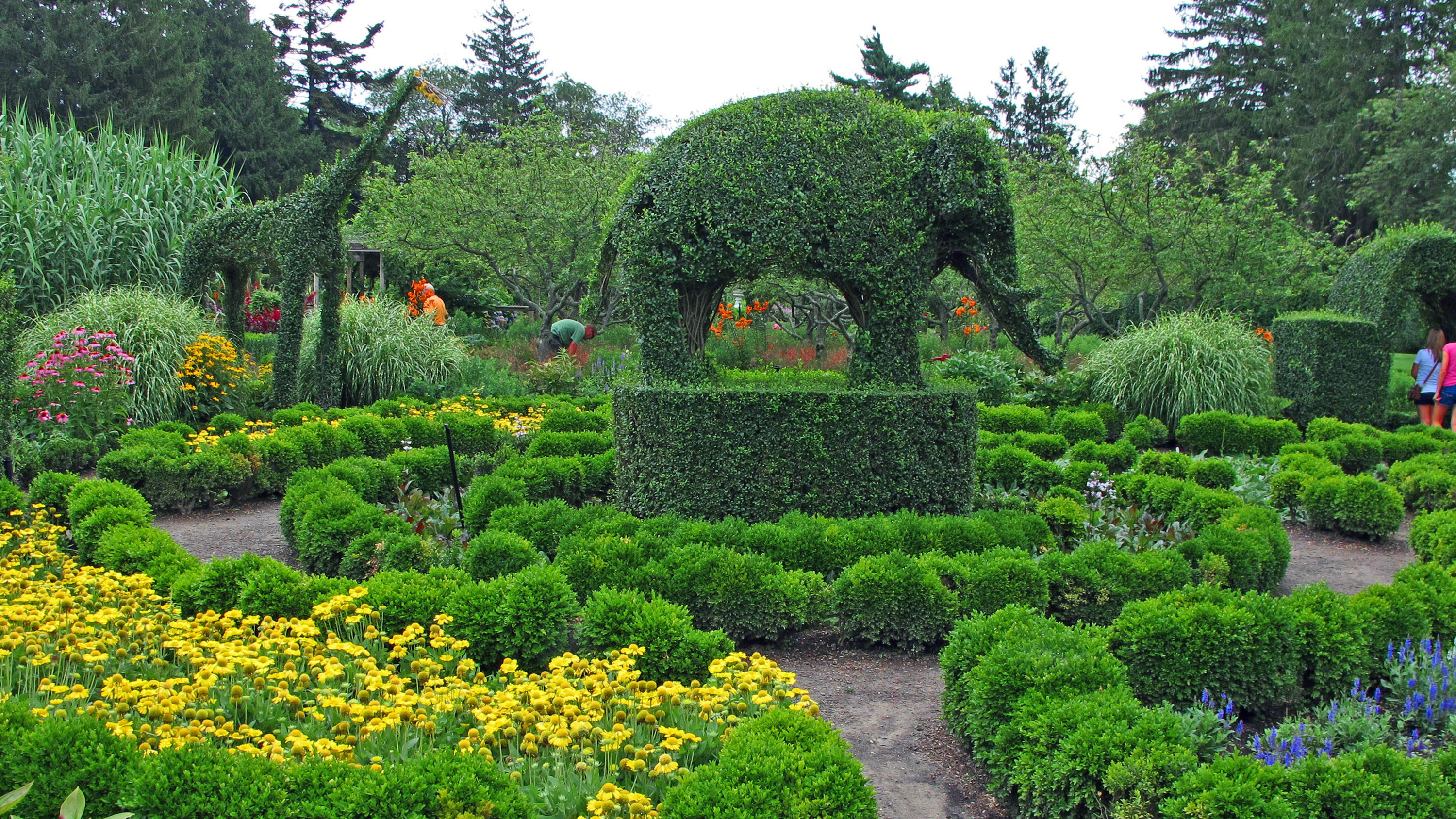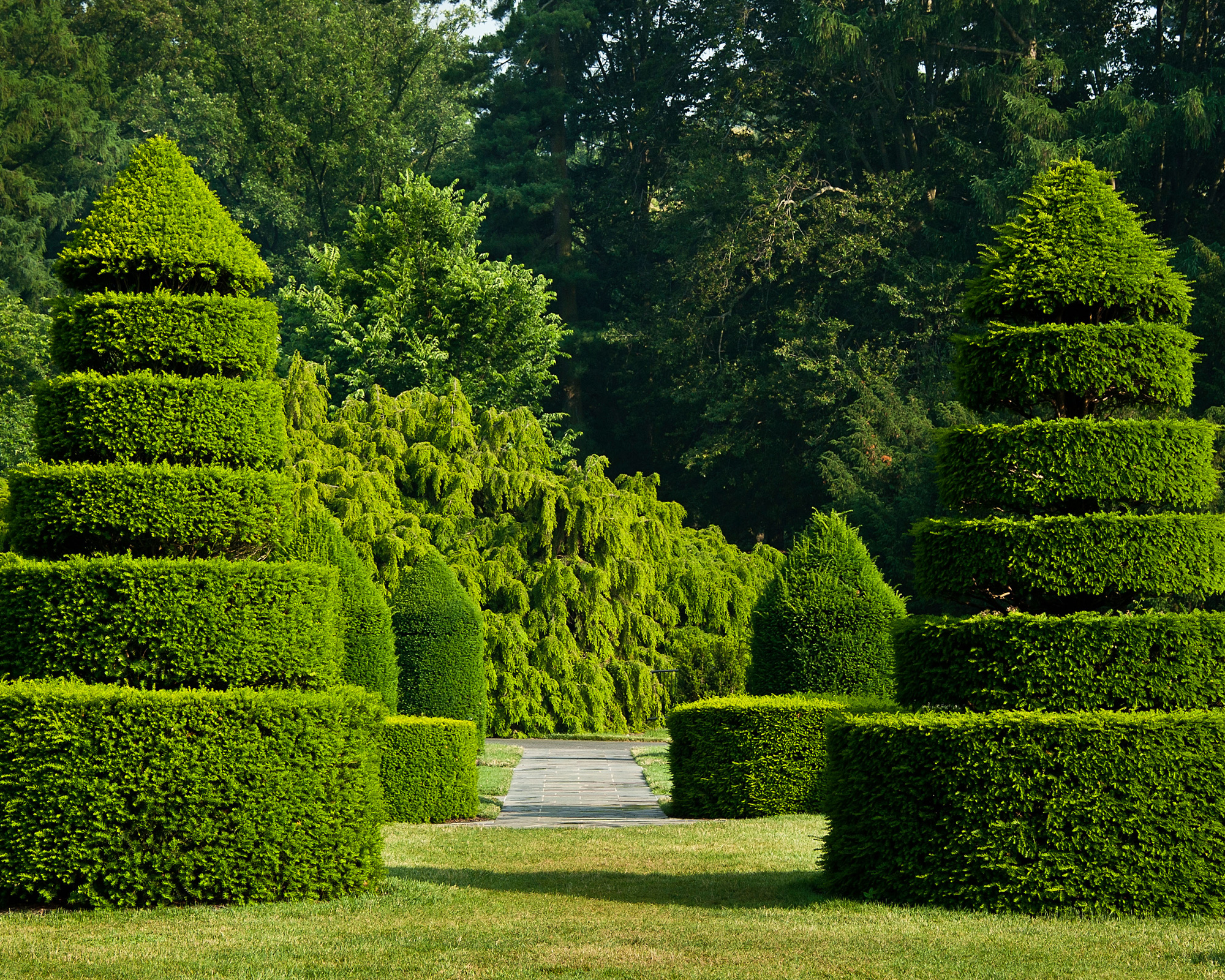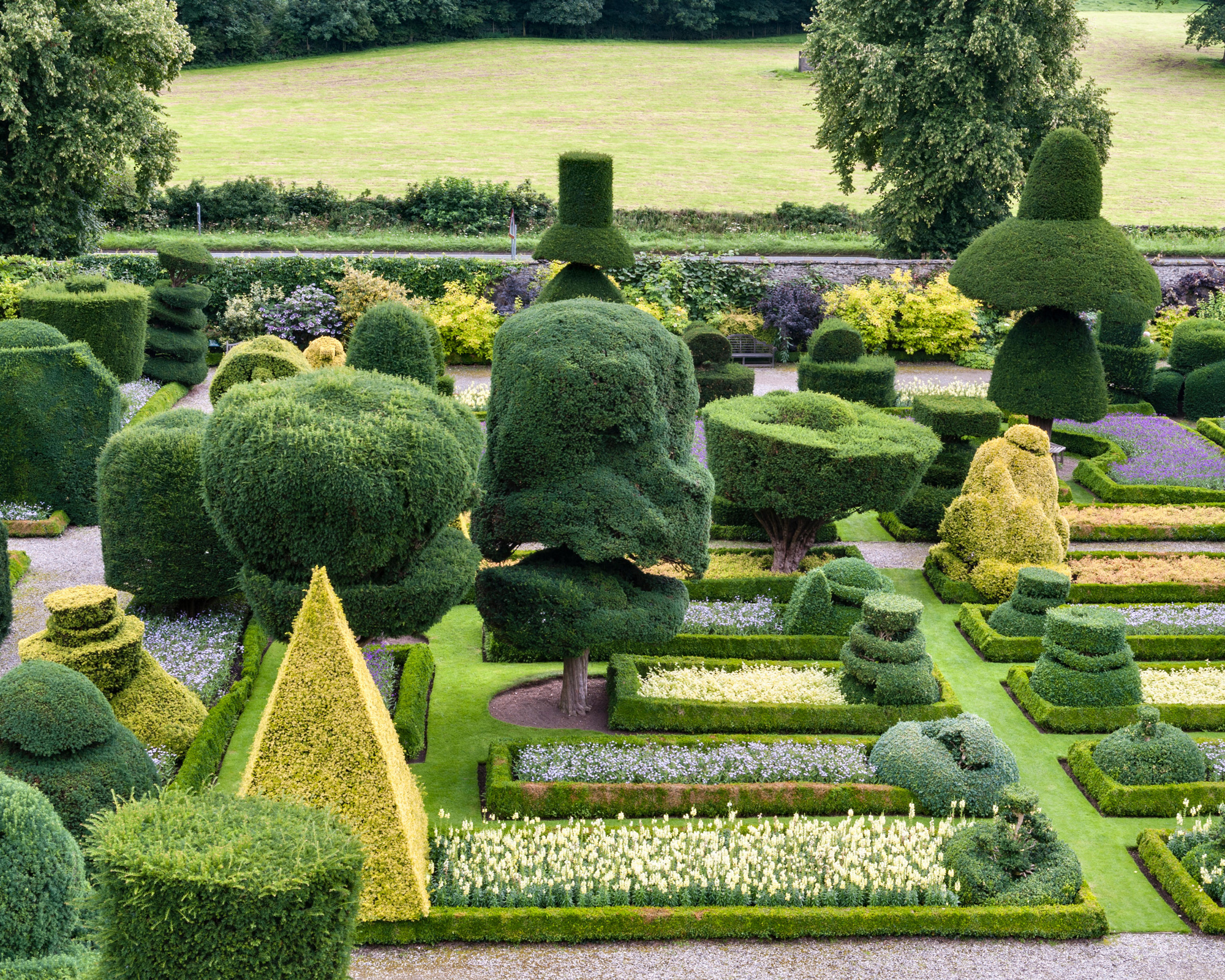5 topiary trend lessons to take from gorgeous botanical gardens
From the US to France, these topiary gardens have some valuable lessons to teach about using the once again popular garden feature

Topiary is making a big comeback this year, and no wonder. Sculptural, structural, a well shaped topiary design makes a real statement in the garden, giving it a whimsical, one-of-a-kind look. Maybe it was Monty Don's dog topiary that recently went viral, or maybe it's just the overall tendency to add more structure to our gardens, but the once old-fashioned art of trimming shrubs into unusual shapes is taking hold again.
It helps that topiary is typically styled from evergreens that are easy to grow in any garden. Yew and box are commonly used – although you also can use more unusual plants for a more bespoke effect. For your own topiary style, take inspiration from these gorgeous topiary gardens from around the world.
1. Explore a stacked design

This topiary style, from the Topiary Garden at Longwood Gardens, Pennsylvania, goes for the classic conical design, but adds a twist to it with multiple tiers. Especially suited for creating an impressive topiary vista in a larger garden, this style requires a bit more work than the average cone-shaped topiary, but also adds more interest to lawn ideas.
2. Create a soft landscape with rounded shapes

For a less formal, more fluid look, opt for several topiary shrubs in soft, rounded shapes. They don't all have to be of the size or arranged symmetrically – you are almost creating a natural, hilly landscape in miniature. The Topiary garden at Marqueyssac Chateau and Gardens, France, demonstrates this topiary style perfectly. It will even work as part of small front garden ideas.
3. Or mix and match rounded and angular shapes

For an even more whimsical, individual look, throw away the rule book and mix up topiary of various shapes and sizes, as in this delightful example from Levens Hall, Cumbria, UK – home to the world's oldest topiary, no less. You will need some mature plants to work with to replicate the undulating shapes and full volume.
4. Use more unusual plants as topiary

If you like the look of topiary but are not so keen on the plants traditionally used for it – box and yew – then you could look to more exotic plant species, especially if you want a taller design.
This glorious topiary in the Jardin des plantes in Orléans, France, uses Japanese cedar, or Cryptomeria japonica, to create the softly stacked design. Japanese cedar has just the dense structure you need for topiary, but also has attractively small, fluffy branches that will give you a different look from yew. It can even be incorporated into a contemporary take on Japanese garden ideas.
5. Trying animal shapes? Go extra large

We couldn't resist animal topiary – it's just so wonderfully playful, giving a garden that Alice in Wonderland look that will please children and adults alike. However, if you are going to attempt animal topiary as part of your family garden ideas, there's one very important rule to follow: you have to work with larger plants. Trying to carve an animal out of a small shrub just won't look right, or have the desired effect. This elephant, at the The Green Animals Topiary Garden, in Rhode Island, truly looks the size of the real animal, which is what you should aim for.
Anna writes about interior design and gardening. Her work has appeared in Homes & Gardens, Livingetc, and many other publications. She is an experienced outdoor and indoor gardener and has a passion for growing roses and Japanese maples in her outside space.
